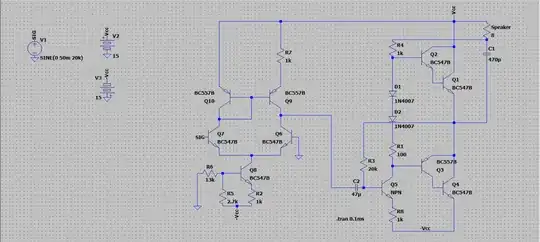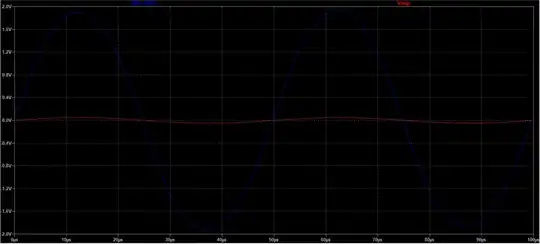I want to design an amplifier to drive an 8 ohm speaker. I am using a differential amp as the first stage, and then a class AB amplifier (inspired by the one I found here class AB amplifier distortion). I need an output of 10v peak to peak but my output is around 3.9v peak to peak for an input of 50mv peak to peak at 20kHz.
 The output waveform is in blue, measured across the two ends of the 8 ohm speaker.
The output waveform is in blue, measured across the two ends of the 8 ohm speaker.
PS : Any good resources for learning analog electronics ? I am not very good at it. Besides Behzad Razavi's lectures.